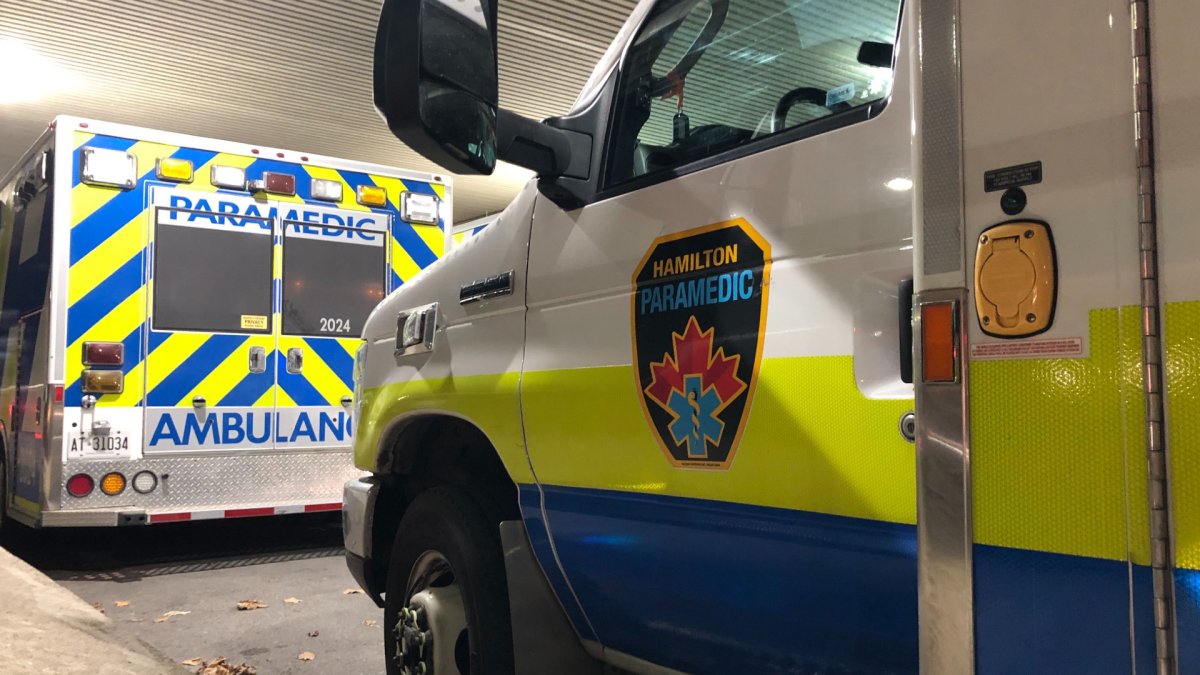Crown counsel asked a former paramedic, accused of failing to provide the necessities to a shooting victim, why he didn’t see a ‘bright red light in his eyes’ when encountering a patient with a ‘decreased level of consciousness’ and ‘abnormal’ vital signs on a central Hamilton sidewalk in 2017.

During day 27 of the judge-only trial of Steve Snively and Christopher Marchant on Thursday, the Crown’s Scott Patterson directed the court to an exhibit outlining the province’s basic life support standards guide suggesting a caregiver should “consider underlying organic disorders” when facing a patient with an altered mental status.
“Isn’t it flashing like a bright red light in your eyes as you’re coming to this assessment that something is going on behaviorally, were you considering that possibility?” Patterson asked Snively.
“Yes, sir,” Snively responded.
“But that brings you right back to the idea that this isn’t psychiatric, that this is, in fact, an organic cause, namely that he’s been shot, doesn’t it?”
“No, sir,” said Snively.
Patterson’s line of questioning revolved around a conversation Snively recorded in his incident report with witness Mustafa Ameer, a then-15-year-old who went to the same high school and mosque as Al-Hasnawi.
The document quoted Snively as asking Ameer if any drugs or alcohol were an issue with Al-Hasnawi, Ameer responded it was against their religious practice, and “don’t do that.”
Patterson told the court the quote “comes to the crux of why” Al-Hasnawi died on Dec. 2, 2017, when Snively reported the witness said he was shot with a “pellet gun” in the abdomen from about six feet away.
_AUG_2_848x480_1291185731741.jpg?w=1040&quality=70&strip=all)
Snively asked the friend to describe the weapon, its size and whether there was a muzzle flash when it was fired. Ameer said he was “uncertain” on all three accounts.
“A plain reading of that is that Mr. Amir was uncertain about all three of those questions,” Patterson said. “Would you agree with that?”
“I agree that’s the way it was written,” Snively said.
Patterson went on to suggest that Ameer said his friend was shot when Snively first asked him what happened.
Snively said “no” and insisted Ameer told him Al-Hasnawi was shot with a pellet gun.
The paramedic went on to say that he may not have written it exactly the way he asked the questions, but said that was the information he gathered from the witness.
Nineteen seconds
During his cross-examination of Snively, Patterson played security footage for the virtual court showing Snively and Marchant arriving at Sanford Street in 2017.
After showing a 19-second excerpt of Snively bending down for his initial assessment of Al-Hasnawi and then standing up afterwards, Patterson suggested Snively “could not accomplish” taking his pulse, “palpating” four quadrants of his abdomen and engage in a discussion with the victim during that period.
“You physically could not accomplish even the conversation that you had with Mr. Al-Hasnawi initially and the amount of time that you were down at his side, 19 seconds, isn’t that the case?” asked Patterson.
Snively said he “recalled” doing all of it.
Patterson then countered with Snively’s incident report which only indicated taking the patient’s pulse, respirations, and observing colour in addition to having a verbal dialogue.
“You see that?” asked Marchant
“Yes,” replied Snively.
“That’s 19 seconds right there, isn’t it?” Marchant said.
“I don’t agree,” said Snively.
In a redirect, Snively’s lawyer, Micahel DelGobbo, asked the witness if he was combining actions in his 19-second assessment of Al Hasnawi.
Snively said he was trying to “multi-task” and could have been much quicker with his palpation to elicit a pain response.
“The patient is being taken from us”
During partner Christopher Marchant’s testimony earlier in the trial, Patterson asked the accused why he didn’t stop a Hamilton police officer or Al-Hasnawi’s brother from attempts to lift the ailing victim from the concrete sidewalk after he was shot.
On Thursday, the Crown circled back to Snively’s interpretation of the event which he characterized as “the patient is being taken from us” in his report. Patterson suggested the paramedic thought “this is bad” and this was a “patient safety” concern.
Snively agreed and told the court “it’s bad” when someone tries to move a patient when they’re trying to do their duty.
Patterson then asked if Snively told either to stop, suggesting Al-Hasnawi may have more than a gunshot wound but maybe C-spine injury.
The paramedic replied, “I don’t know what I said to somebody in that brief few seconds.”
Day 28 of the judge-only trial resumes on Monday.
Justice Harrison Arrell is expected to hear from a medical expert testifying for the defence.




Comments